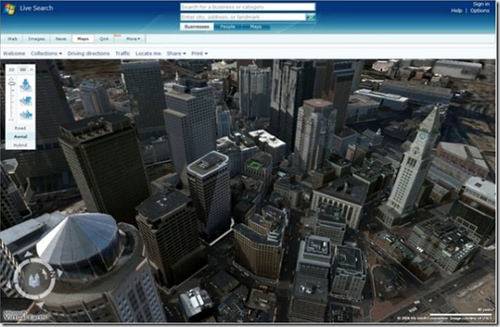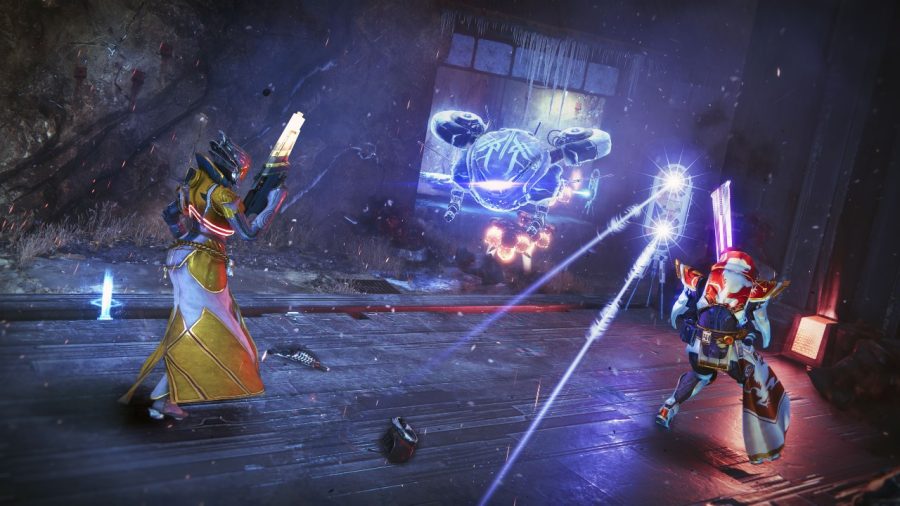Tonight I sat down with Microsoft executives Steve
Berkowitz (Senior Vice President, Online Services Group) and Christopher Payne (Corporate
Vice President, Live Search) to talk about their new 3D
version of Virtual Earth. Microsoft is
positioning Virtual Earth as “the beginning of the 3D Web”, a quote I heard from Steve Lawler (General Manager, Virtual Earth Business Unit) during the
launch event this evening. In my discussion with Steve and Christopher – which was more
an informal sit-down than a formal interview – we discussed the ramifications of this 3D
push, as well as how visual search is the next big thing in search.

First things first. Here is a quick overview of the product details
from Techcrunch:
“US users with Vista-ready Windows computers and IE 6 or 7 will be able to navigate
through an aerial view of 15 select cities with enough detail to discern the texture of
buildings and read clickable billboards from the likes of Fox, Nissan and John L. Scott
Real Estate. Virtual Earth 3D is expected to expand to cover up to 100 cities around the
world by the end of next summer. “
Virtual Earth can be used only in IE browsers (no immediate plans for Firefox, in the
beta at least), and as part of search results. On that latter point, Microsoft is very
keen to “change the game of search” and take it to the next level – in order to trump a
certain Mountain View company. But during my conversation with Steve and Christopher, it
was clear that they regard this as an evolutionary process and not a revolutionary one. They
told me that visual search is the next step in search and Virtual Earth is a good
demonstration of where search is headed.
Pic: Antonio
Ortiz

We got onto the topic of mobile phones and how location-based search will utilize the
visual aspects of mapping and 3D views that Virtual Earth is showcasing currently. This
is looking at future Live products perhaps, but it’s fascinating to think of the
possibilities…
As to the current utility of Virtual Earth, it is certainly a technical step above
what Google has to offer right now. Whether it will be as well-used for the next year or
so is another matter, as it requires a Windows machine running Vista to work and IE. But
in terms of technical achievement and ‘the wow factor’, there’s no doubt Virtual Earth
has it in spades. When you use the product and drill down into the city landscapes, it’s
almost as if you’re surfing in SecondLife. I can imagine this technology being used in
Xbox 360 and indeed the advertising that is part of the 3D landscape of Virtual Earth comes from Microsoft acquisition Massive (which does
advertising within games). This is where the similarity with mobile is most striking –
because the advertising we’ll get in Virtual Earth will be location-based too, e.g.
advertising from local restaurants, movies playing in the local theatre, etc.
Steve and Christopher told me that visual search will be pushed out to other products
in the Live family of products over time – e.g. mobile, XBox and perhaps even Zune. This
theme of visual search and 3D interfaces shows that Microsoft really is pushing the
envelope in search (something I questioned recently). The proof will be in the pudding,
whether millions of people actually use this type of technology on a regular basis over
the next few years. But it’s good to see them doing something different in the search
space. While Google continues to bound ahead in general search, Yahoo goes after social search, and little startups like Eurekster and Rollyo come out with new
things – Microsoft is starting to ramp up their search with visual
interfaces.
Finally, a note on the Live/MSN branding. I asked Steve about the confusion between
the two – he replied that the two brands have different audiences and so he sees the MSN
brand continuing for quite some time. While Live services will be a big focus, Microsoft
will continue to drive the MSN brand for the type of user who doesn’t want/need the
personalization and advanced functionality offered in Live products. That type of user
may use both MSN and Live products (e.g. MSN portal and Live Messenger), but Steve says
there is room for both brands – it isn’t a ‘one size fits all’ product strategy.









